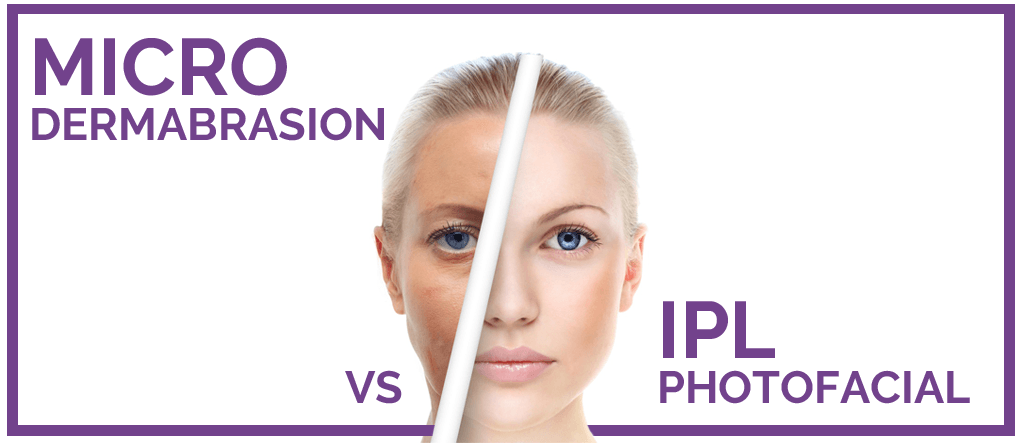Microdermabrasion vs IPL Photofacial: What’s the difference?

Find the right skin rejuvenation treatment for you.
Over the course of life our bodies go through changes that affect the way our skin looks, be it acne at puberty, post-pregnancy stretch marks, sun damage or discoloration, or so-called age spots. .
With new technologies emerging every other month, finding the right treatment for your skin can be especially tricky, . To keep you informed and help you make the best possible choices, here we review the two most popular skin treatment methods on the market today: microdermabrasion and IPL photofacial.
What is microdermabrasion and how does it work?
Microdermabrasion is the “older” procedure of the two. Having been around since the 1980s, it is proudly among the most popular time-tested treatments worldwide. It rejuvenates and repairs damaged skin using tiny crystals (mostly diamond) and a vacuum system.
During the procedure, a machine directs a flow of crystals across the skin to exfoliate the top layer (about 5 -10 microns) of cells and stimulate collagen production.
Who should consider microdermabrasion?
Microdermabrasion treats a wide array of skin-related problems, including stretch marks, acne scars, sun spots, clogged pores, and rosacea, as well as wrinkles and fine lines. It can be used as a remedy for a specific skin condition or a way to refresh your appearance every once in a while. It’s non-invasive, safe, and leaves the treated area smooth and clear.
What is IPL Photofacial and how does it work?
Intense pulse light therapy, or IPL, is somewhat more cutting edge than microdermabrasion. It’s computer-controlled and uses non-laser, high-intensity multi-wavelength light. This not only allows the dermatologist better control while skin resurfacing, but also penetrates more deeply.
During the photofacial procedure, light impulses from a lamp touch the targeted skin cells (stretch marks, sun spots, age marks) and the light turns into heat, destroying those cells.
Who should consider IPL Photofacial?
IPL photofacial treats many of the same skin-related problems as microdermabrasion: sun spots and skin discoloration in general, rosacea, acne, spider veins, etc. IPL works great if you are looking for a way to refresh your appearance rather than treat a specific skin condition.
It’s non-invasive, painless, and has no major side effects (mild pigment irregularities, stinging, or temporary redness can occur, but no bruising). However, it’s important to know that ethnic or darker skin can be more challenging to treat.
Because darker skin is prone to absorbing more light energy, more severe side effects, such as blistering, are more common. If you still wish to have IPL treatments, make sure you choose a dermatologist experienced in this technique, and ask to have the IPL tested on a small area of your skin first.This will insure that you are making a safe choice and and optimal setting for you.
So, Microdermabrasion vs IPL Treatment: What’s the difference?
The main difference between Microdermabrasion and IPL Treatment is the depth on which both technologies work. Microdermabrasion offers a “from outside in” approach. The crystals peel off dead cells from the surface layer of the skin and the vacuum sucks it all up. IPL Photofacial is more advanced technology that can destroy damaged cells deep within the skin layer without any harm coming to the surrounding tissue. To sum it all up, IPL Photofacial is a more complex procedure than Microdermabrasion but the effects are more visible and last longer.

